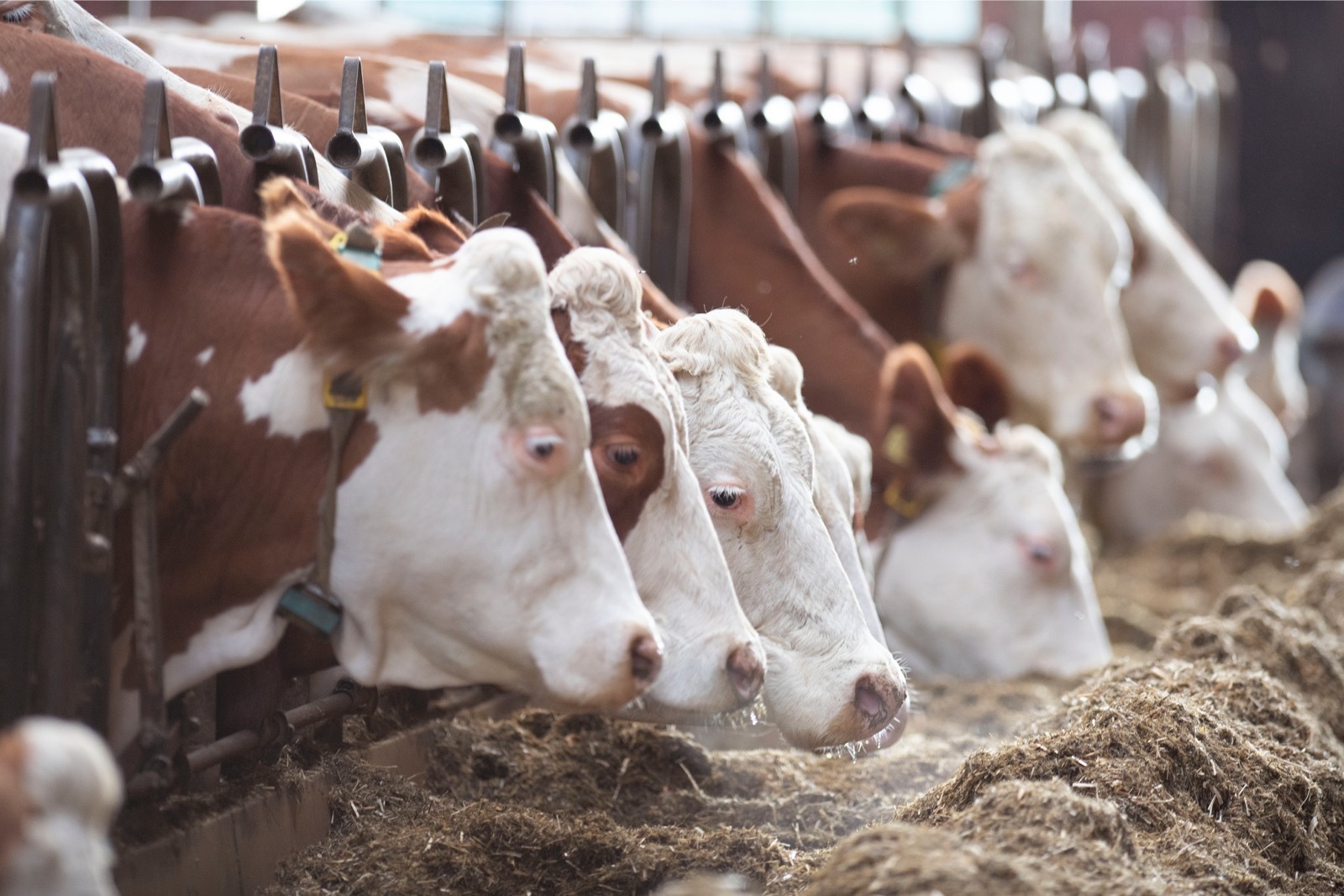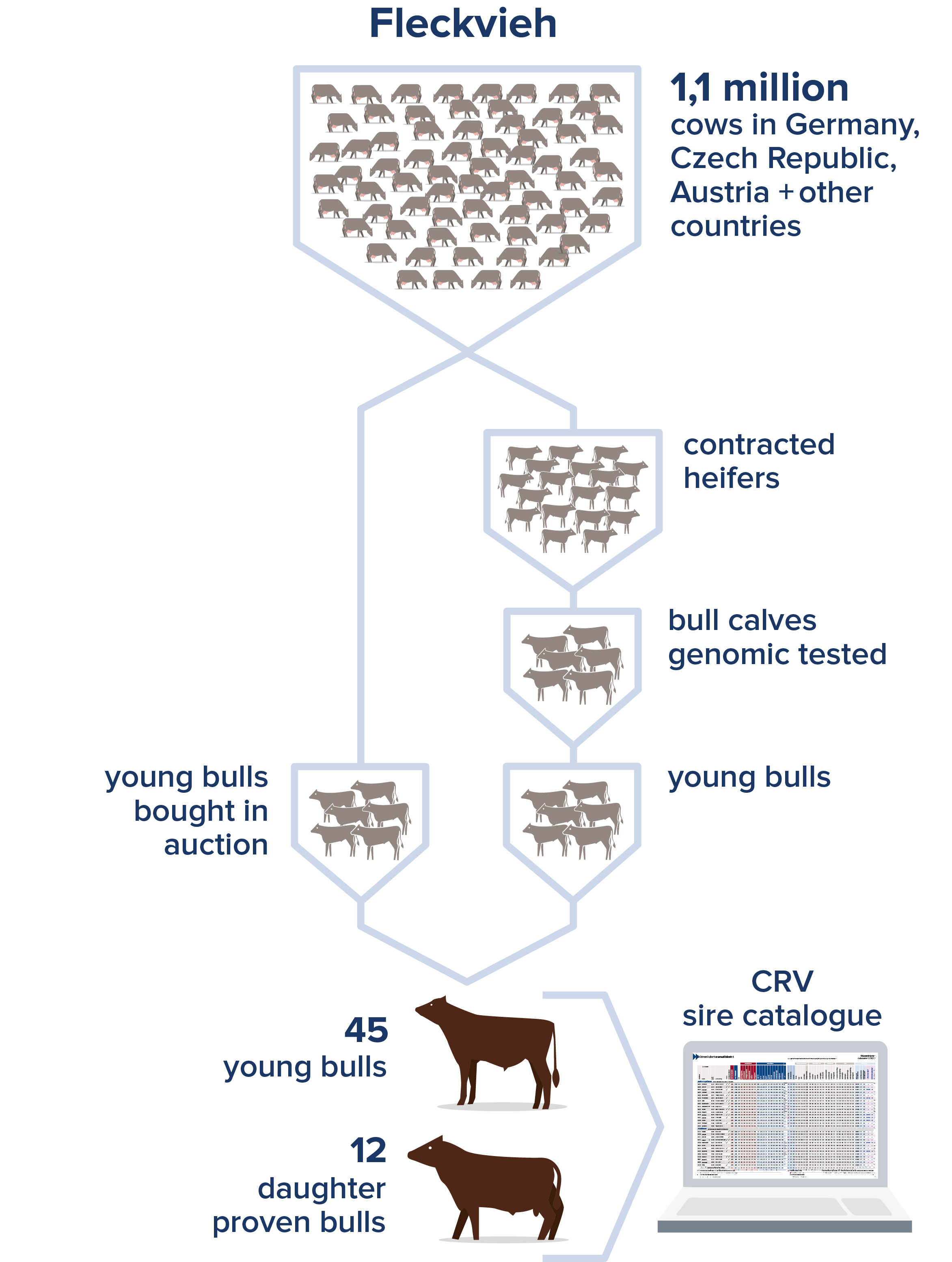Numbering a population of about 1.1 million registered cows in Europe alone, Fleckvieh is the most commonly farmed dual-purpose breed in the world. And Fleckvieh comes in second to Holstein as a dairy breed. The homelands of Fleckvieh breeding are the south of Germany, Austria and the Czech Republic. CRV promotes a professional and progressive breeding programme in these countries. CRV also enjoys access to the Fleckvieh populations in France, Italy and Croatia, for example.
‘This breeding programme has resulted in a wide range of bulls from the highest ranked genomic young bulls and daughter proven breeding bulls. This portfolio - which is extremely competitive on an international level - is offered to farmers around the world via CRV's distribution network’, says Tobias Lerner, global product manager Fleckvieh at CRV Germany. ‘Fleckvieh genetics from CRV guarantee rapid genetic progress in purebred breeding programmes. However, the popularity of Fleckvieh bulls as a cross is also on the rise in many countries. Fleckvieh is currently the most widely used breed for cross-breeding’, Lerner explains.


